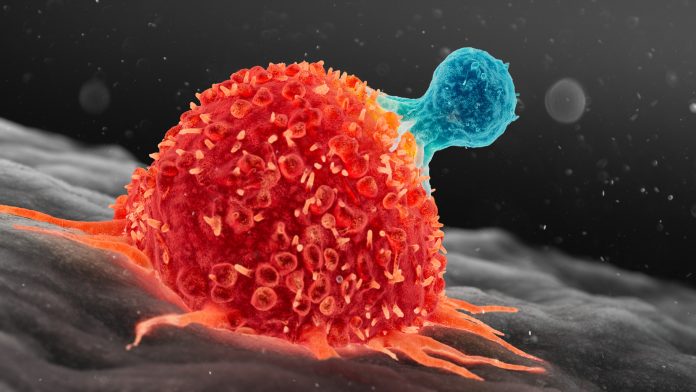
Cancer patients with higher levels of gamma delta T cells usually have better outcomes than those with lower levels but the mechanism explaining this phenomenon has not been well understood. A new paper in Nature from researchers at Gladstone Institutes and UC San Francisco reveals the circumstances in which these gamma delta T cells can recognize cancer cells.
“We knew that gamma delta T cells recognize their target cells in a very different way from conventional T cells, but the field has had some trouble figuring out exactly how the gamma delta T cells were recognizing the cancer cells,” says Murad Mamedov, PhD, a postdoctoral scholar at Gladstone and first author of the study.
The researchers observed that the most abundant subset of human gamma delta T cells recognizes a protein complex containing butyrophilins, a common cell surface protein. But these molecules are found on the surface of many human cells—both healthy and diseased. Further study reveals that a metabolic pathway involved in energy homeostasis activated the butyrophilin complex making them more recognizable to the gamma delta T cells.
The team used CRISPR screens to identify the pathways that regulate gamma delta T cell killing and butyrophilin expression, performing thousands of gene disruptions in lymphoma cells to see which ones affected whether gamma delta T cells could recognize and target them.
The CRISPR screens showed previously unappreciated multilayered regulation of butyrophilin abundance on the cell surface and triggering of gamma delta T cells. Gene deletions causing cellular stress and depleted energy production elevated the amount of butyrophilin on cancer cells’ surfaces. In particular, the genetic perturbations disrupted metabolic pathways in the cancer cells involving ATP-producing processes. Digging deeper, the researchers learned that AMP-activated protein kinase (AMPK) induced butyrophilin expression.
Using this insight, they showed that when tumor cells from cancer patients are treated with a small molecule drug that activates AMPK, the tumor cells increased their butyrophilin expression making them more easily recognized by gamma delta T cells. As a result, the cancer cells are killed more efficiently.
“In healthy cells, butyrophilin is invisible to gamma delta T cells, so that T cells don’t start killing them,” explains Mamedov. “But when stress pathways are increased in cancer and the butyrophilins are activated, these molecules become more abundant and act as a target for gamma delta T cells.”
The study’s authors suggest that therapies manipulating the abundance of butyrophilin on the surface of patients’ cancer cells could make gamma delta T cells more effective cancer fighters. “The “AMPK-dependent mechanism deepens our understanding of gamma delta T cell stress surveillance and suggests new avenues available to enhance gamma delta T cell anticancer activity.”











